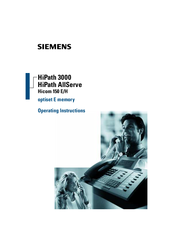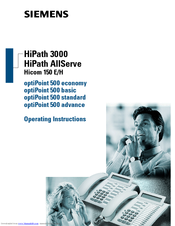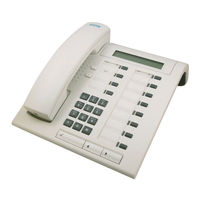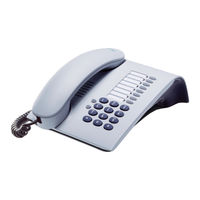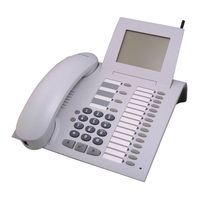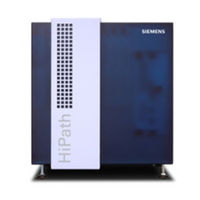Siemens HiPath AllServe Manuals
Manuals and User Guides for Siemens HiPath AllServe. We have 10 Siemens HiPath AllServe manuals available for free PDF download: Operating Instructions Manual, Administrator's Manual
Advertisement
Siemens HiPath AllServe Operating Instructions Manual (114 pages)
HiPath AllServe Hicom 150 E/H
Table of Contents
Siemens HiPath AllServe Operating Instructions Manual (114 pages)
Siemens Telephone User Manual
Table of Contents
Advertisement
Siemens HiPath AllServe Operating Instructions Manual (110 pages)
on your HiPath 3000/HiPath AllServe
Table of Contents
Siemens HiPath AllServe Operating Instructions Manual (68 pages)
Hicom 150 E/H optiset E entry
Table of Contents
Siemens HiPath AllServe Administrator's Manual (49 pages)
Brand: Siemens
|
Category: Conference System
|
Size: 1.67 MB
Table of Contents
Siemens HiPath AllServe Administrator's Manual (46 pages)
Brand: Siemens
|
Category: Telephone System
|
Size: 2 MB
Table of Contents
Siemens HiPath AllServe Operating Instructions Manual (20 pages)
Brand: Siemens
|
Category: Industrial Equipment
|
Size: 0.17 MB
Table of Contents
Siemens HiPath AllServe Administrator's Manual (46 pages)
Brand: Siemens
|
Category: Telephone System
|
Size: 2.29 MB
Advertisement
